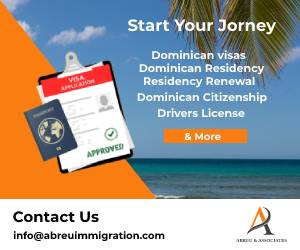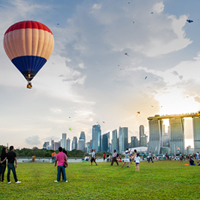Driving in Samana
Summary: Driving in a new country can be daunting. These tips offer insight into what to expect when driving in Samana.
1. Understanding the Driving Culture
Driving in Samana, like many parts of the Dominican Republic, can be a bit chaotic compared to what you might be used to. Traffic rules are often ignored, and drivers can be aggressive. Be prepared for motorcycles and mopeds darting in and out of traffic, and don't be surprised if you see vehicles driving at night without lights. Always drive defensively and stay alert.
2. Choosing the Right Vehicle
Given the condition of some roads in Samana, a 4x4 vehicle is often recommended. This is especially true if you plan to explore more rural areas or if you're staying during the rainy season when roads can become muddy and difficult to navigate. However, in the city and main roads, a regular car should suffice.
3. Parking in Samana
Finding parking in Samana is generally not a problem, especially compared to larger cities. However, always ensure to park in a safe and well-lit area. Parking is usually free or very cheap, but it's always a good idea to have some small change on hand just in case.
4. Driving with an International License
Foreigners can drive in the Dominican Republic with an international driver's license for up to 90 days. After this period, you will need to obtain a local driver's license.
5. Obtaining a Local Driver's License
To get a Dominican driver's license, you will need to visit the General Directorate of Traffic Safety and Land Transportation (DIGESETT). You will need to provide your passport, a medical certificate, and proof of residence. You will also need to pass a written test and a practical driving test. It's recommended to hire a local attorney or facilitator to help with the process, as it can be quite bureaucratic and time-consuming.
6. Road Conditions
While main roads and highways are generally in good condition, be prepared for potholes and sudden changes in road quality, especially in more rural areas. Also, be aware that street signs and signals are often lacking, so a good GPS or map is essential.
7. Safety Precautions
Always wear your seatbelt and avoid driving at night if possible. Also, be aware that drink driving is a serious offense in the Dominican Republic and is heavily penalized. Always have your documents (driver's license, passport, and vehicle registration) with you when driving, as police checks are common.
About the Author
 Betsy Burlingame is the Founder and President of Expat Exchange and is one of the Founders of Digital Nomad Exchange. She launched Expat Exchange in 1997 as her Master's thesis project at NYU. Prior to Expat Exchange, Betsy worked at AT&T in International
and Mass Market Marketing. She graduated from Ohio Wesleyan University
with a BA in International Business and German.
Betsy Burlingame is the Founder and President of Expat Exchange and is one of the Founders of Digital Nomad Exchange. She launched Expat Exchange in 1997 as her Master's thesis project at NYU. Prior to Expat Exchange, Betsy worked at AT&T in International
and Mass Market Marketing. She graduated from Ohio Wesleyan University
with a BA in International Business and German.
Some of Betsy's articles include 12 Best Places to Live in Portugal, 7 Best Places to Live in Panama and 12 Things to Know Before Moving to the Dominican Republic. Betsy loves to travel and spend time with her family. Connect with Betsy on LinkedIn.
Additional Information:





